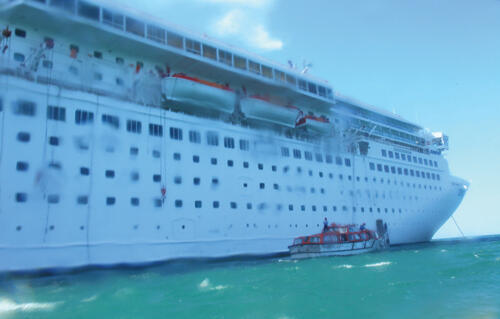Chile Arte Extremo
Corporación Cultural de Las Condes, Santiago de Chile
Comprised of works by 18 Chilean artists of international renown, this exhibition depicts key moments of the critical-experimental scene that emerged in the 1990s in Chile. The show, which gathers together paintings, murals, photographs, collages, objects, installations and videos − some of which have never been exhibited before in Chile − was inspired by the homonymous book by the journalist Carolina Lara, curator of the exhibition, and by the academicians Guillermo Machuca and Sergio Rojas. Like the publication, the show presents a group of artists who configured the Chilean art scene of the mid 1990s, in the heyday of the democratic transition and who, in the early 2000s, were already part of the international circuit.

The exhibiting artists are Mario Navarro, Livia Marín, Francisco Valdés, Ignacio Gumucio, Guillermo Cifuentes, Iván Navarro, Mónica Bengoa, Jorge Cabieses Valdés, Cristian Silvia-Avaria, Patrick Steeger, Carolina Ruff, Rodrigo Bruna, Claudio Correa, Sebastián Preece, Isidora Correa, Camilo Yáñez, Máximo Corvalán-Pincheira and Pablo Ferrer. This generation has been marked by the post-dictatorship, by neoliberalism and globalization, issues which are represented in their works by means of formal or conceptual operations revealing a political orientation or rigurous handcraft. In a small and dark exhibition hall, artist Cristian Silva-Avaria presents his video instal- lation Cacería de Navíos, Primera Parte (Ship Hunt, First Part) a cruise ship recorded from on board a motor boat. The video is screened in a retro projection, a system which, by reducing our field of vision and projecting the picture at a monumental scale, generates feelings of vertigo and oppression. With the help of fishermen from the area, Silva-Avaria embarks on the hunt of these liners in a sort of reverted conquest: the artwork inverts the desire of looking from the perspective of the invaders (the tourists) to that of those invaded (the natives). Isidora Correa features the photographic series “ABC/Línea discontinua” (ABC/Broken line) comprised of 24 pictures in small format which were taken in 2011. The pictures constitute a sample of industrial or artisanal utilitarian objects that have been dissected and reduced to a mere silhouette. When losing their volume, the objects cease to be sculptures and become drawings recorded in photographs. Thus the spectator is forced to “mentally reconstruct the object”, to question him/herself about the tensions that originate between emptiness and con- tent, waste and consumption.
-
 Cristián Silva-Avaria. Ship Hunt, 2011. Video Installation. Courtesy Las Condes Cultural Center. Cacería de Navío, 2011. Video Instalación. Cortesía Centro Cultural Las Condes.
Cristián Silva-Avaria. Ship Hunt, 2011. Video Installation. Courtesy Las Condes Cultural Center. Cacería de Navío, 2011. Video Instalación. Cortesía Centro Cultural Las Condes.




